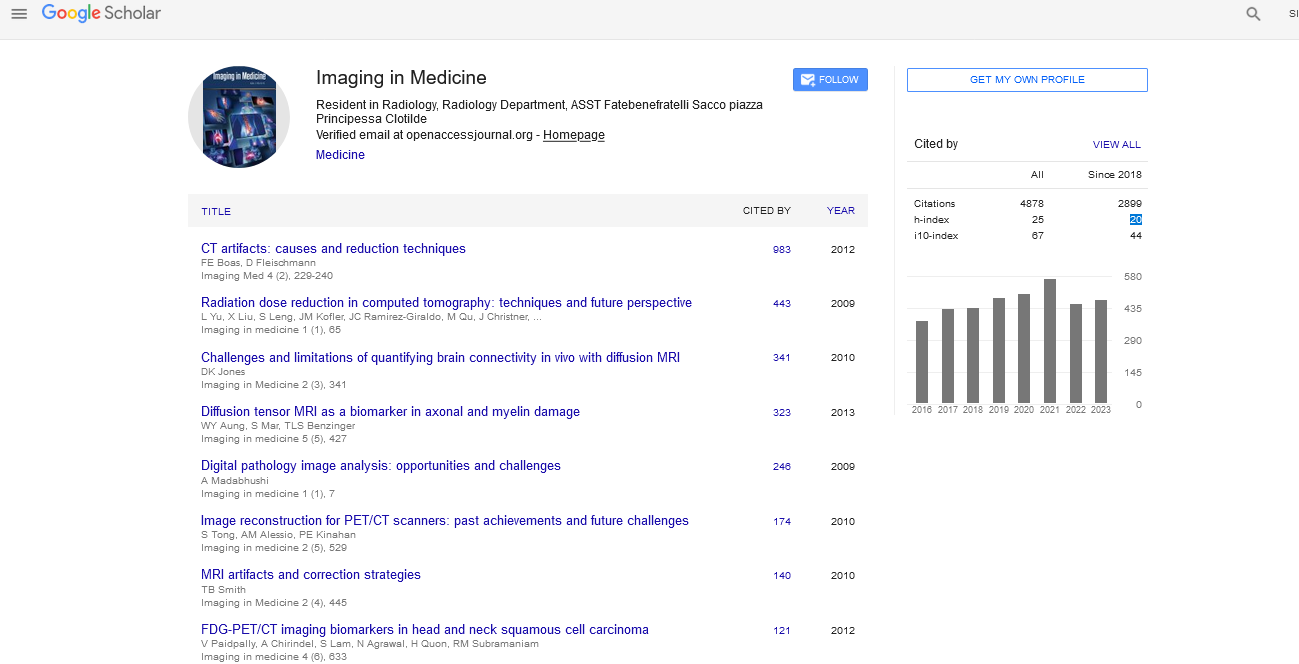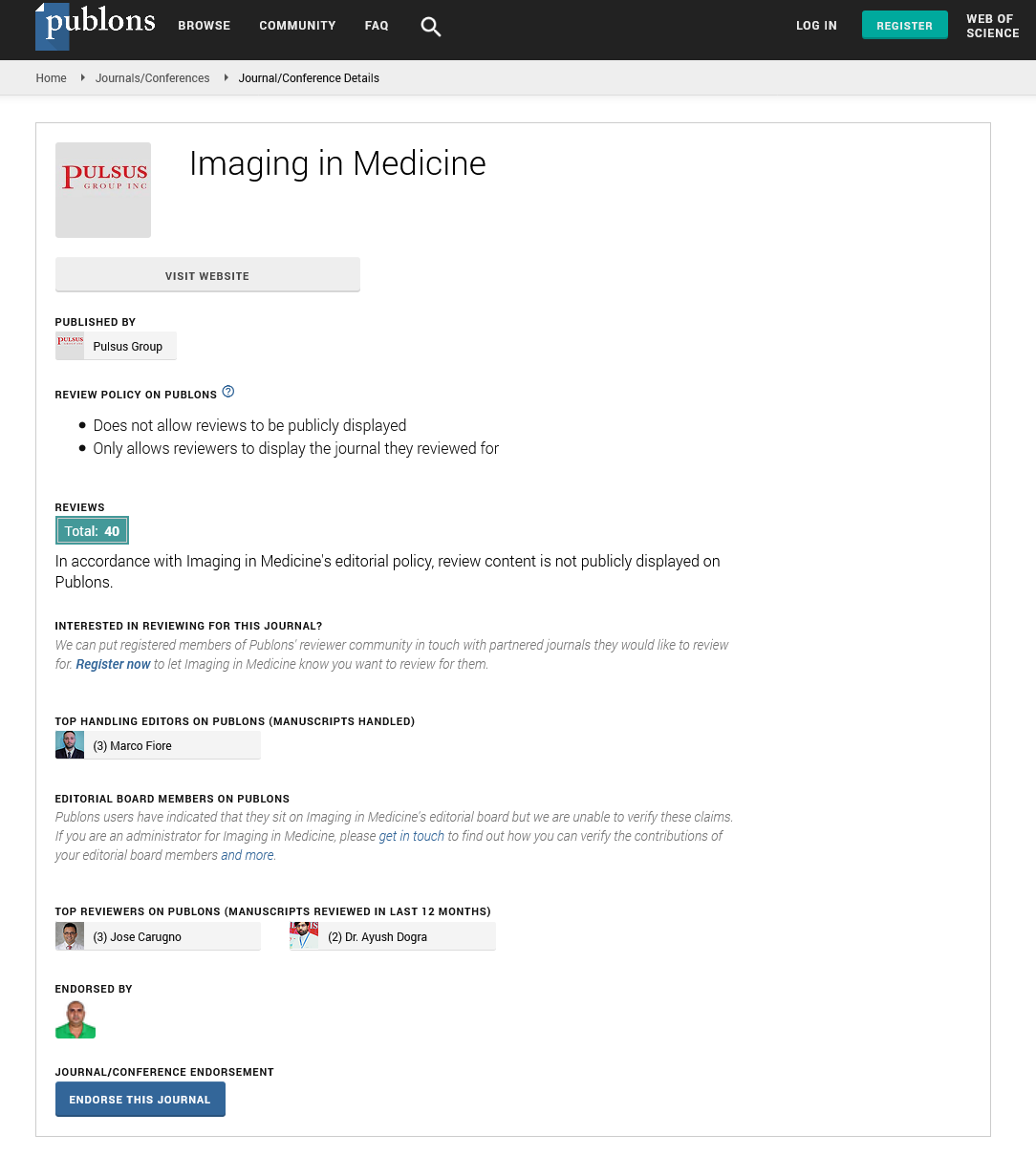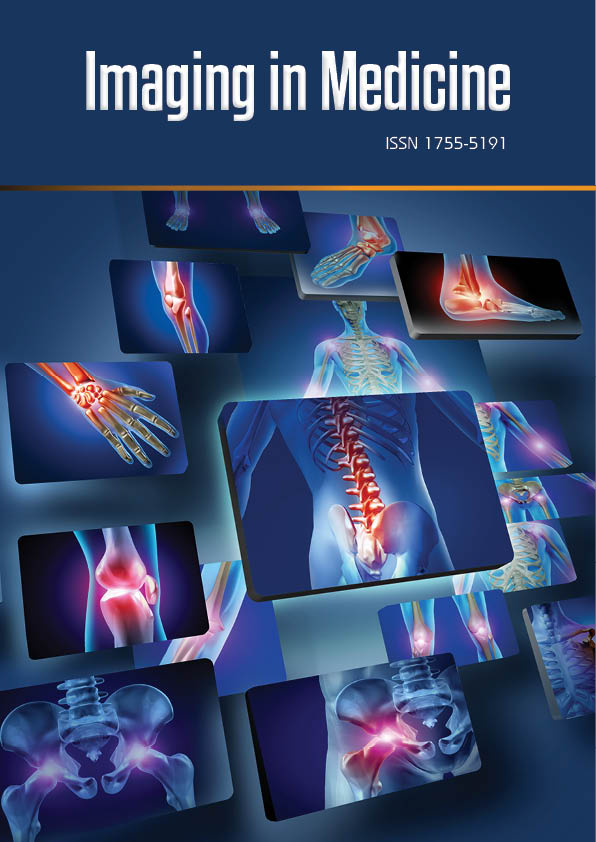Editorial - Imaging in Medicine (2025) Volume 17, Issue 1
Digital Pathology Imaging: Revolutionizing Disease Diagnosis
Lara Sproll*
Department of Radiology, Dartmouth Hitchcock Medical Center, Lebanon
- *Corresponding Author:
- Lara Sproll
Department of Radiology, Dartmouth Hitchcock Medical Center, Lebanon
E-mail: lara@sproll.de
Received: 17-Jan-2024, Manuscript No. fmim- 25-169965; Editor assigned: 20-Jan-2024, PreQC No. fmim-25-169965 (PQ); Reviewed: 04-October-2024, QC No. fmim-25-169965; Revised: 14-Jan-2024, Manuscript No. fmim- 25-169965 (R); Published: 21-Jan-2024, DOI: 10.47532/1755-5191.2025.17(1).1-3
Introduction
Pathology has long been the foundation of disease diagnosis, guiding treatment decisions through the microscopic analysis of tissues and cells. Traditionally, this work has relied on glass slides and optical microscopes [1]. However, with advances in imaging and information technology, pathology is undergoing a major transformation. Digital pathology imaging—the practice of converting glass slides into high-resolution digital images—has emerged as a powerful tool that enhances accuracy, accessibility, and collaboration in healthcare.
What is Digital Pathology Imaging?
Digital pathology imaging involves scanning conventional glass slides with a specialized scanner to create whole-slide images (WSIs). These digital files can be stored, shared, and analyzed on computers, tablets, or even mobile devices. Unlike traditional slides, which can degrade or break, digital images are permanent and easily retrievable. With the help of advanced software, pathologists can zoom [2], annotate, and perform image analysis with the same or greater precision than with a microscope.
Key Applications of Digital Pathology
Digital pathology has a broad range of clinical, educational, and research applications:
Clinical Diagnosis: Pathologists can review digital slides remotely, supporting faster and more accurate diagnoses.
Telepathology: Enables remote consultation and second opinions by allowing images to be shared across hospitals, cities, or even countries [3].
Cancer Detection and Grading: Digital imaging paired with artificial intelligence (AI) assists in identifying tumor margins, grading cancers, and quantifying biomarkers.
Education and Training: Digital slides can be used as teaching material for medical students and residents, offering a standardized and easily accessible resource.
Research and Clinical Trials: Digital archives facilitate large-scale research by enabling slide sharing and automated analysis across institutions.
Advantages of Digital Pathology Imaging
The shift to digital offers multiple benefits:
Accessibility and Collaboration: Pathologists can collaborate globally without physically transporting slides.
Efficiency: Digital systems streamline workflows, reduce slide handling, and minimize delays in diagnosis.
Accuracy and Consistency: AI-powered tools help detect subtle features that may be overlooked under a microscope, improving diagnostic reliability [4].
Data Preservation: Digital slides remain intact indefinitely, creating robust archives for future research and audits.
Integration with Electronic Health Records (EHRs): Digital pathology systems can be linked with EHRs, ensuring seamless access to patient data and imaging.
Challenges and Limitations
Despite its promise, digital pathology faces some obstacles:
High Cost of Implementation: Scanners, storage infrastructure, and software can be expensive for hospitals and laboratories.
Data Management: Whole-slide images are extremely large files, requiring significant storage and secure management systems.
Standardization Issues: Variability in scanning technologies and software platforms can affect consistency across institutions.
Training Requirements: Pathologists must adapt to digital workflows and new software tools.
Regulatory and Legal Considerations: Approval processes and compliance with data privacy laws remain complex, particularly in cross-border telepathology [5].
The Role of Artificial Intelligence in Digital Pathology
One of the most exciting frontiers in digital pathology is the integration of AI and machine learning. Algorithms can analyze thousands of image features in seconds, assisting in tasks such as:
- Detecting early signs of cancer.
- Quantifying tumor-infiltrating immune cells.
- Predicting patient outcomes from tissue patterns.
- Reducing workload by pre-screening slides for abnormalities.
AI does not replace pathologists but rather augments their expertise, allowing them to focus on complex cases while ensuring greater efficiency and consistency.
The Future of Digital Pathology Imaging
The field is rapidly advancing toward becoming the standard of care in pathology. Cloud-based platforms are making storage and sharing more efficient, while faster scanners and improved data compression are reducing technical barriers. Integration with other imaging technologies, such as radiology and genomics, is paving the way for computational pathology, where multiple data sources converge to provide deeper insights into disease. With continued innovation, digital pathology will not only transform diagnosis but also play a central role in precision medicine.
Conclusion
Digital pathology imaging is redefining the way diseases are diagnosed, taught, and researched. By turning traditional glass slides into high-resolution digital files, it enhances collaboration, improves efficiency, and opens the door for AI-assisted diagnostics. While challenges such as cost, storage, and regulation remain, the benefits far outweigh the hurdles. As adoption grows, digital pathology will become a cornerstone of modern medicine, ensuring more accurate diagnoses, better patient outcomes, and a global network of interconnected pathologists shaping the future of healthcare.
References
- Mujagic S, Kozic D, Huseinagic H, Smajlovic D. Symmetry, asymmetry and hypoplasia of intracranial internal carotid artery on magnetic resonance angiography. Acta Med Acad. 2016; 45:1- 9.
- Rusu MC, Vrapclu AD, Lazar M. A rare variant of accessory cerebral artery. Surg Radiol Anat. 2023; 45(5):523-526.
- Krause DA, Youdas JW. Bilateral presence of a variant subscapularis muscle. Int J Anat Var. 2017; 10(4):79-80.
- Mann MR, Plutecki D, Janda P, PÄkala J, Malinowski K, et al. The subscapularis muscleâa metaâanalysis of its variations, prevalence, and anatomy.⯠Clin Anat. 2023; 36(3):527-541.
- Pillay M, Jacob SM. Bilateral presence of axillary arch muscle passing through the posterior cord of the brachial plexus. Int. J. Morphol., 27(4):1047-1050, 2009.
PubMed, Google Scholar, Crossref
PubMed, Google Scholar, Crossref
PubMed, Google Scholar, Crossref


